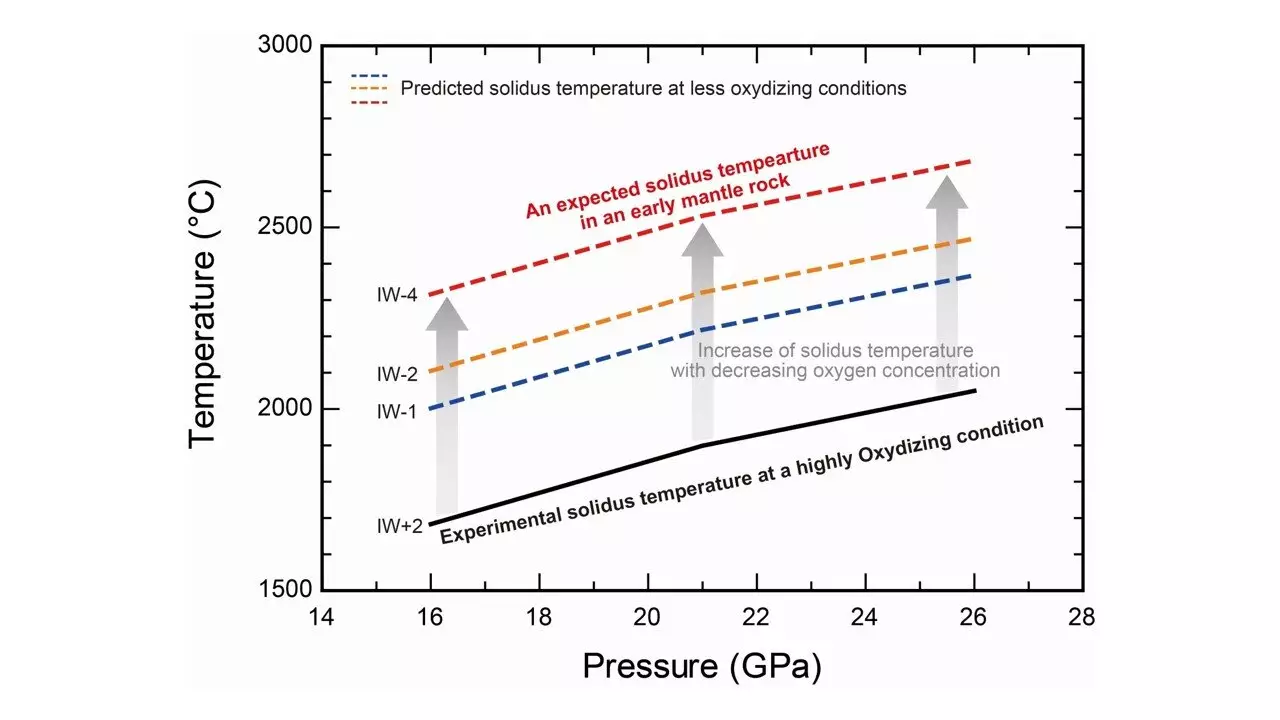The formation of Earth has long intrigued scientists, primarily due to the unique conditions that prevailed during its nascent stages. Early in its history, the planet was awash in an expansive ocean of molten magma, a result stemming from the immense heat generated by the violent collisions with smaller celestial bodies. This intense environment set the foundation for our planet’s geological and atmospheric evolution. However, despite extensive research, there remains a notable lack of agreement on the precise temperatures at which deep mantle rocks melt, which subsequently complicates our understanding of the conditions that led to the magma ocean’s creation.
The Challenge of Melting Temperature Consensus
Current models addressing the melting temperatures of Earth’s mantle are largely built upon a limited set of experimental data. Recent studies, however, offer new insights that suggest these previously accepted values may require revision. Discrepancies that range from 200 to 250 degrees Celsius have been noted in new experimental findings compared to older data. This raises significant questions about how accurately we understand not only the melting processes but also the parameters governing them, particularly concerning the availability of oxygen in the mantle, known as oxygen fugacity.
The Influence of Oxygen Fugacity on Mantle Melting
Oxygen fugacity is a critical factor in geophysical processes, as it influences the chemistry and activity of materials contained within the Earth’s mantle. Researchers hypothesize that oxygen fugacity has likely increased during moments of planetary accretion and core formation, yet its effect on the melting temperatures of deep mantle materials remains inadequately explored. Insights into this connection promise to shed light on the very conditions that governed magma ocean formation.
Research Contributions by Leading Scientists
To address this pressing gap in our understanding, a collaborative effort led by Associate Professor Takayuki Ishii from Japan’s Okayama University and Dr. Yanhao Lin from the Center for High Pressure Science and Technology Advanced Research in China has been undertaken. This research also includes prominent contributors from several prestigious institutions worldwide—Dr. Wim van Westrenen from Vrije Universiteit Amsterdam, Professor Tomoo Katsura from the Bayerisches Geoinstitut, and Dr. Ho-Kwang Mao from the Center for High Pressure Science and Technology. Together, they conducted experimental analyses that scrutinized the effects of varying oxygen fugacities on the melting behavior of deep mantle materials.
In these groundbreaking experiments, the team simulated the extreme pressures expected in the Earth’s mantle—ranging from 16 to 26 Gigapascals, equating to depths of approximately 470 to 720 kilometers. By manipulating oxygen fugacity in these tests, they uncovered that higher oxygen levels correlated with significantly reduced melting temperatures. Their findings indicate that melting temperatures were 230 to 450 degrees Celsius lower than those recorded under lower oxygen fugacity conditions. This striking revelation implies that the depth of the magma ocean floor would escalate by about 60 kilometers with each logarithmic unit increase in mantle oxygen fugacity.
Implications for Early Earth Models
The implications of these findings are profound. The study challenges existing models regarding the thermal evolution of early Earth and prompts a reassessment of the conditions surrounding core formation. Moreover, it offers explanations for the observed inconsistencies between low predicted oxygen fugacities in the Earth’s post-core mantle and the surprisingly high levels documented in ancient magmatic rocks, tracing back over three billion years.
The importance of understanding the relationship between oxygen fugacity and melting temperatures extends beyond Earth’s formation. As highlighted by Dr. Lin, these insights are applicable to the study of rocky planets beyond our own, enhancing our comprehension of planetary formation processes that could support human life elsewhere in the universe. The research not only contributes to our understanding of Earth’s historical geology but also opens doors to theoretical frameworks applicable to exoplanetary studies.
The interplay of oxygen fugacity and melting temperatures serves as a pivotal aspect of understanding early Earth’s geological history. As researchers continue to refine our knowledge of these processes, we may be led towards a more comprehensive model of our planet’s evolution, enriching both scientific inquiry and our perspective on life in the cosmos. The investigation into these fundamental processes underscores the dynamic relationships that shape rocky planets, asserting the significance of multifactorial approaches in planetary science.


Leave a Reply